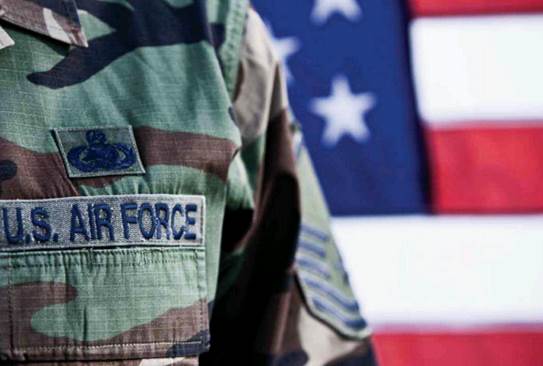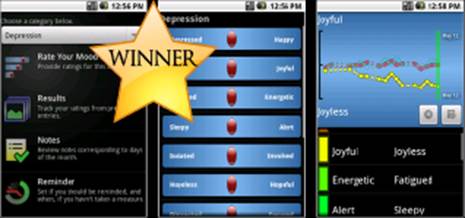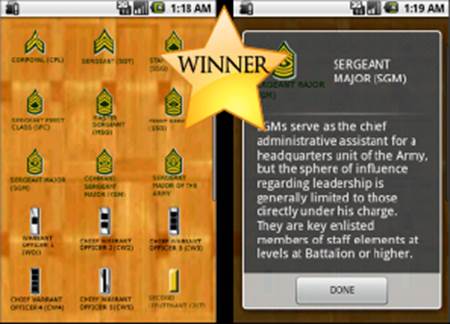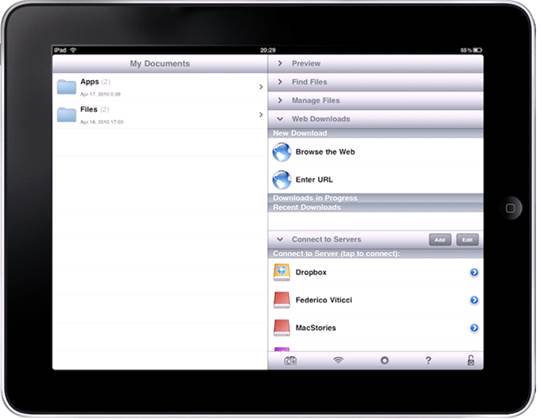How iDevices are changing Washington
and the Pentagon
Apple's iPhone and iPad are turning up all
over the Washington Beltway, from the corridors of power on Capitol Hill and
the White House to the military strongholds of the Pentagon - namely, the Army
and Air Force.

Mobile
in the military
Indeed, the iPhone and iPad have made arguably
as big an impact across the public sector of the U.S. Federal Government as
they have across the general populace. This is not surprising, as the
government represents a microcosm of society with multiple agencies, representing
everything from agriculture to health care, and from economic policy to
national defense.
The introduction of the iPhone in June of
2007 (coupled with Google's Android Open Handset Alliance) helped to create a
phenomenon called the "consumerization of information technology (IT)"
or "technology populism." This is an ever-increasing trend in which
people bring their powerful consumer devices into the workplace, and thus merge
their "real life" with their work life.
People are becoming accustomed to having
more computational power in their hands in a variety of form factors, which
they depend on for both personal and business tasks. The separation between
work and personal IT tools has been blurred; people find their iPhones and
iPads so indispensable that they are bringing them into work and demanding that
IT departments support them.
This phenomenon shows no sign of abating
and poses a serious challenge to traditional IT departments. The customary
purpose for a centralized IT department was to issue and centrally manage all
"client" devices (including PCs, PDAs, cell phones, smartphones, and
other computing resources).This model served companies well for decades and
insured a consistent user experience.

Indeed,
the iPhone and iPad have made arguably as big an impact across the public
sector of the U.S.
The iPhone was a game changer and the
introduction of the iPad accelerated things even further. It's not uncommon to
go to meetings where the customary pad of paper or laptop PC has been replaced
by a tablet. Due to the beauty of digitization, notes can now be entered into
the iPad once and copied or saved for later use. This eliminates the need for
transcription of written notes and the inherent errors that come into play when
one is retyping information. Besides the now-pedestrian use of the iPad for
taking notes, people all over the Beltway are finding new, interesting, and
compelling uses for the technology.
According to Michael T. McCarthy, Director
of Operations and Program Manager for the Army's Brigade Modernization Command,
"The Army recognized the value of using tablet devices early in our
examination of smartphones and devices for the Connecting Soldiers to Digital
Applications project. In a classroom or training environment, the full-sized
devices have proven to be an exceptional tool for the student soldiers. In an
operational environment, size, weight, and power are critical elements for any
device. Soldiers tell us that they need a smaller tablet. As a consequence of
their recommendations, we are really looking forward to putting the iPad mini
into their hands and giving it a realistic workout."
Below are just a few examples of how the
iPhone and iPad are used by the U.S. military:
Apps for the army
The U.S. Army's "Apps for the
Army" program kicked off as an app-development contest open to soldiers
and Army Civilians. The Army asked developers to come up with interesting and
useful software applications for Apple and Android devices in certain
categories related to their daily work, including morale, welfare, and recreation:
Army mission; information access; and location awareness and training.
The idea is that by developing their own
apps, the Army can speed up the app- development process and therefore save
money.
According to the Army, about 140
individuals or teams signed up to participate in the program, which created a
first round of about 53 applications. Of the 53 submitted, 25 got through the
certification process.
"We say that we are looking for an
application to do XYZ, and we give them 30 days to come back and show us what
they have," says former Army CIO Lt. Gen. Jeffrey A. Sorenson. "We
give them 60 more days to develop it, and in 90 days we have an app,"
Sorenson said.
Maj. Gregory Motes, Capt. Christopher
Braunstein, and Capt. Stacey Osborn of the Army Signal Center at Fort Gordon,
GA, worked as a team to develop four applications for the contest. Their
Physical Training Program app for the iPhone helps soldiers develop their own
training regimen based on the Army's new Physical Readiness Training program.
“We took a look at the new training manual
and we sat down as a group and started to break it apart - we didn't want to
put a wall of words, a PDF into an application," Motes said.
The final product was an app that creates a
training regimen for individual soldiers, using videos and still images to
fully demonstrate how various exercises should be done.
"We saw this as a new way that
training manuals could be in the future,” Motes said. "Some people learn
better by reading words and looking at pictures, and some people appreciate the
videos."
From the 53 applications submitted to the
Apps for the Army challenge, 15 winners were chosen - a first, second, and
third-place winner in each of five categories. Additionally, 10 “honorable
mentions" were named.
Winning applications included: The
Physical Training Program, developed by Maj. Gregory Motes, Capt.
Christopher Braunstein, and Capt. Stacey Osborn of the Army Signal Center, Ft.
Gordon, GA. Telehealth Mood Tracker, developed by Robert Kayl,
Scott Swim, and Robert Van Gorkom of the National Center for Telehealth and
Technology, Joint Base Lewis-McChord, WA. The Disaster Relief app,
developed by Andrew Jenkins and Alex Ly of the Engineer Research and
Development Center, Alexandria, VA. The Movement Projection app,
developed by Luke Catania of the Engineer Research and Development Center,
Alexandria, VA; and The New Recruit app, developed by Thomas Maroulis of
Armament Research, Development and Engineering Center, Picatinny Arsenal, NJ.
Note: These apps are not intended for
consumer use. Soldiers wishing to see the apps developed in the Apps for the
Army challenge can do so through this URL: storefront.mil/army.

Telehealth
Mood Tracker

The
Movement Projection

The
New Recruit app
Air force flight bags
Air Mobility Command (AMC), one of the
Major Commands or MAJCOMs of the U.S. Air Force, put out a request for proposal
to procure as many as 18,000 iPad 2s for use by pilots, navigators, trainers,
and ground personnel.
The idea is that iPads can replace traditional
paper-based Electronic Flight Bags (EFBs) that are very heavy (roughly 70
pounds per aircraft) and become antiquated very quickly (AMC requires flying
charts to be updated every 28 days). AMC estimates that iPads will eliminate
$1.77 million in printing costs of the EFB manual, plus an additional $3.28
million per year in printing costs for maps and charts. The transition will
also save 22,000 man-hours, and $770 thousand in yearly fuel costs.
In addition, using iPads can save physical
space in crammed cockpits. "With limited space in the cockpit and the
amount of paper that each crew has to manage, it can quickly become controlled
chaos," said Maj. Pete Brichenough, who heads AMC's EFB test. "An EFB
could solve this issue by putting all the information in one place to be
recalled and updated almost immediately."
AMC decided early on that the iPad was the
best solution for a paperless EFB. According to EFB Requirements Manager Rich
Quidgoen, the biggest hurdle in getting Apple technology was overcoming
outdated policy.
Only a few hundred iPads were fielded at
first. The reason for the slow start in field deployment had to do with
information assurance/security concerns related to a piece of software
developed in Russia that is onboard these devices. The software is a PDF reader
called GoodReader (iPad version: $4.99, www.app2.me/2924)

GoodReader
for iPad
The Army's Mike McCarthy, one of the
biggest proponents for IT modernization and the use of consumer devices across
the Department of Defense, noted, "We only have one opportunity to get the
information security issues right for the use of mobile devices. We are looking
for solutions that will provide security to the sources of data as well as the
users of data. We must provide for the protection of data at rest, in transit,
as well as in process. We are looking at a number of solutions, also with an
eye on being able to secure the supply chain from beginning to end. Without
these measures in place, we are potentially putting our soldiers at risk, and
that is something we are unwilling to do."